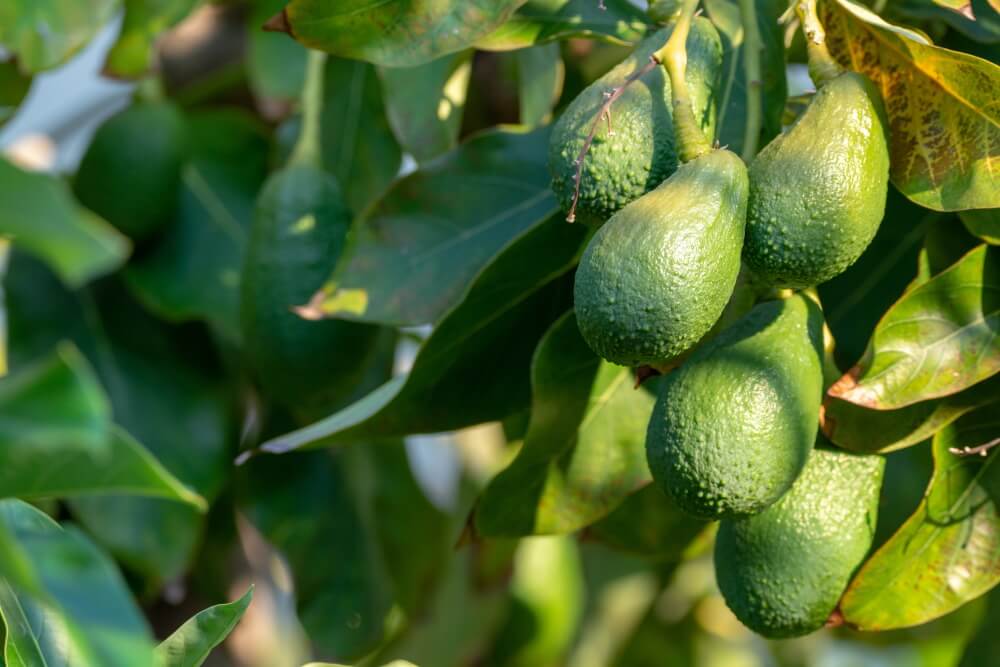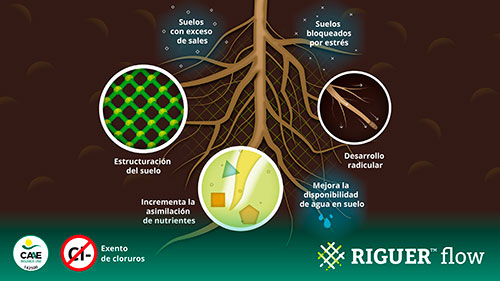Calcium in tropical crops and its involvement in the final quality of fruit

9,333 km. This is the distance from the International Airport of Morelia, the capital city of the state of Michoacán (Mexico) to Ten Katemarkt, one of the most emblematic neighbourhood markets in Amsterdam (Holland). Last year its famous stalls of fruit and vegetables and delicatessen products were laden with thousands of kilos of Mexican avocados, to the delight of local shoppers.
They arrived direct from the leading world producer and exporter of this fruit thanks to its capacity to produce 1 out of every 3 avocados that enter the international market. In addition to the Netherlands, Mexico exported most of its 2.4 million tons of avocados produced in 2020 to far-away destinations such as Japan, Canada, France, China, South Korea and, obviously, the United States.
To travel 5,799 miles and for the fruit to reach the larders of appreciative central European consumers in perfect conditions is only possible thanks to the meticulous management of all the parameters that affect quality, especially everything to do with post-harvest treatment.
Proper management of nutrition and fertilization in tropical fruits is essential to enhance their organoleptic qualities and appearance and, of course to prolong their useful life, ensuring that the fruit reaches prime condition and maintains it right up to consumption.
And with regard to quality, calcium is one of the nutrients that has the best and biggest impact on this parameter. It is a structural element that plays a determining role in the maintenance of cell tissue, as well as in crop development and fruiting.
Calcium acts as an element of cohesion between cells and provides cell walls with strength, robustness and capacity for conservation. All of this reduces the possibility of the entry of pathogens and, consequently of deterioration in quality. Calcium deficiency leads to rotting, low resistance and other defects that shorten the useful life of fruit.
Availability of calcium in the soil
To analyse the role calcium plays in the quality of tropical fruits such as mango, avocado or cherimoya fruit, it is first important to understand how calcium, which is naturally present in the soil, acts.
The way in which the soil has been formed, its structure and the passing of time contribute to the release of calcium, so that this element may form part of the actual organic matter of the soil, it may be absorbed by the plant, or it may be locked in the soil or present in a form with low levels of solubility or indeed, there may be none present, due to leaching. For this reason, it is always recommended to carry out a prior soil analysis to be aware of the nutritional state of the soil and thus be able to maximise yield potential.
The role of transpiration
Calcium is transported through the plant via the xylem thanks to the circulation of water from the soil and roots to the aerial part. For this reason, it is necessary to ensure proper plant hydration, especially during the early stages of development. Low transpiration, either due to excessive ambient humidity or due to very low temperatures, hinders the circulation of water and this can cause serious calcium deficits in ripe fruit.
Time of application and phenology
Once inside the plant, calcium accumulates in the oldest leaves due to their greater transpiration capacity. So, it is the youngest organs which, in spite of their higher calcium requirements, are the first to show signs of the deficit of this macronutrient due to their lower transpiration rate.
In the case of avocados, for example, there is an opportunity for calcium at the phenological stage prior to flowering because it is the moment when the plant's rate of transpiration is at its highest and thus, offers the best conditions for calcium to be transported from the roots to the leaves and fruits.
High added value nutrition
If you are in time for calcium to be assimilated by the plant, the recommendation for tropical fruit nutrition is to apply calcium via the roots. Seipasa has designed the new line of BioActive products, consisting of a set of nutritional solutions with high added value that cover all the needs of crops at every stage of development.
Seipasa's BioActive Line
In the BioAtive line, Riguer Flow is a formulation in which the synergistic mode of action of its composition not only improves soil structure and root development, but also reduces locked soil states caused by extreme conditions and helps form strong, thick cell walls that protect the cells from different attacks.
 Thanks to its micronized flow formulation the BioActive technology in Riguer Flow allows optimal dissolution and maximum absorption of nutrients by plants. Moreover, Riguer Flow acts as a rhizosphere equaliser: it allows the release, stabilisation and balanced absorption of locked nutrients, it increases soil water efficiency and affords greater structural strength to combat the effects of different types of stress.
Thanks to its micronized flow formulation the BioActive technology in Riguer Flow allows optimal dissolution and maximum absorption of nutrients by plants. Moreover, Riguer Flow acts as a rhizosphere equaliser: it allows the release, stabilisation and balanced absorption of locked nutrients, it increases soil water efficiency and affords greater structural strength to combat the effects of different types of stress.
Riguer Flow improves the structural plasticity of cell walls and membranes. Its action is crucial in the translocation process, even at times of low evapotranspiration. It is also an effective solution to combat saline stress.
 Another of the products in Seipasa's BioActive line is Filer Flow, a formulation designed to enhance fruit swelling and filling, improve plant structure and rigidity and ensure maximum final quality at harvest.
Another of the products in Seipasa's BioActive line is Filer Flow, a formulation designed to enhance fruit swelling and filling, improve plant structure and rigidity and ensure maximum final quality at harvest.
And then there is Roker Flow, developed to ensure a constant, sustained energy input, from roots to fruits. It activates the growth of microflora and encourages nutrient assimilation. Roker flow offers an effective input of nutrients that are readily available, favouring orderly plant growth and more even fruiting and ripening.
In the case of a product that often has to travel thousands of kilometres to reach the end consumer, calcium proves to be an essential macronutrient to maintain optimal levels of quality.
Crop management and solutions applied at source must be accompanied by correct post-harvest treatment in order to prolong the life cycle of products and guarantee their conservation and quality until they reach their destination markets.

